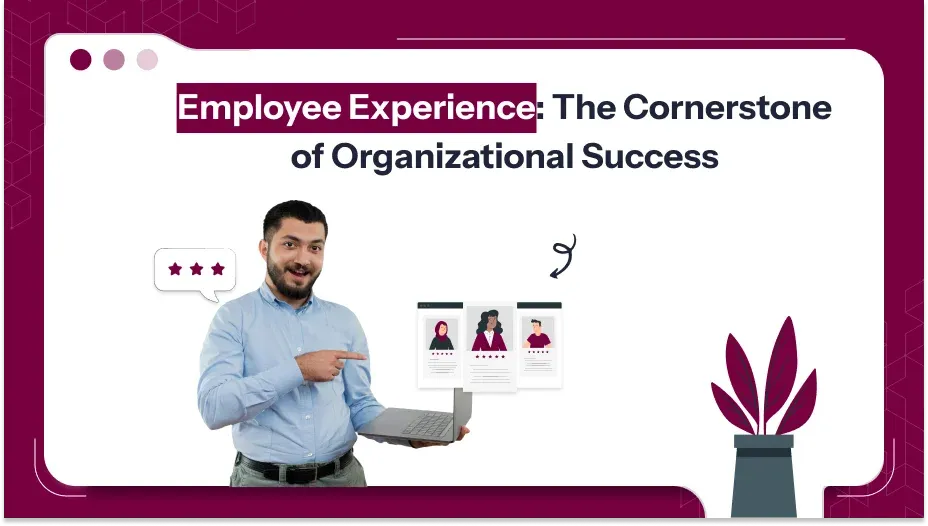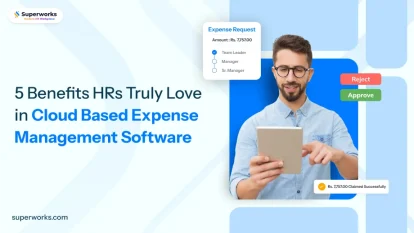
Introduction
In the modern dynamic work environment, the best employee experience has become the most important factor in organizational success. EX is not a buzzword but a comprehensive journey an employee goes through from the onboarding process to their daily tasks, work environment, and finally, to their exit. A positive EX is directly linked to higher productivity, improved retention, and an enhanced reputation as an employer of choice.
As organizations strive to stay competitive, leveraging tools like focusing on employee digital experience has become essential. In this blog, we’ll explore the importance of EX, the pillars that shape it, and how businesses can optimize it to drive growth and engagement.
What is Employee Experience?
Employee experience is the journey that an employee undertakes within an organization. Every interaction, process, and moment will influence perceptions and feelings toward the company. Recruitment, onboarding, day-to-day work, opportunities for growth and development, and how one leaves are all parts of the best employee experience.
Key Components of Employee Experience Include:
Physical Environment
A well-designed office layout, ergonomic furniture, and accessible facilities contribute to comfort and productivity among employees.
Digital Environment
Digital-first collaboration tools and platforms used at work have a significant bearing on the best employee experience. A user-friendly employee experience platform can streamline the flow of processes, reduce friction, and improve communication between teams involved.
Cultural Environment
Organizational culture determines the values, beliefs, and behaviors that outline how employees interact and work. A positive culture founded on transparency, trust, and inclusivity encourages a sense of belonging and purpose.
The best employee experience is when the organizational goals align with the employee’s needs grow together and are satisfied in the process.
Why Employee Experience Matters
It means employee experience goes beyond just keeping the employees happy but empowers them to do their best work and fosters loyalty. Here’s why EX matters:
Enhanced Productivity
A positive EX directly impacts an employee’s productivity. The value of being appreciated and supported brings them to a state where they tend to work hard in the positions they have.
Better Retention and Recruitment
Companies with strong EX have lower turnover rates. Furthermore, a reputation for excellent EX attracts top talent, making recruitment more effective.
Better Customer Experience
Happy employees make happy customers. Employees who are satisfied and engaged deliver better services.
Stronger Organizational Culture
EX is critical to creating a cohesively positive workplace culture that inspires collaboration and innovation.
- Fostering the need of employee engagement is essential for creating a positive and impactful employee experience that drives organizational success.
Key Pillars of a Strong Employee Experience
Creating an impactful best employee experience requires focusing on several key areas. Let’s delve into the pillars that shape EX:
Onboarding and Integration
The journey of a positive EX begins with onboarding. Onboarding the employee properly sets the tone for an employee’s experience.
- Provide a roadmap of responsibilities and expectations.
- An employee management system allows the use of an employee experience platform to streamline the onboarding process and collect feedback.
Workplace Environment
Both physical and digital workspaces play a role in EX. A clean, ergonomic workspace coupled with robust hr software companies in India tools ensures employees can perform efficiently.
- Flexible work arrangements, like hybrid models, cater to diverse employee needs.
- Digital tools, such as best employee experience software, enhance communication and collaboration.
Leadership and Management
The relationship between employees and their managers significantly impacts EX. Effective leaders:
- Foster trust and open communication.
- Provide regular feedback and opportunities for growth.
- An employee management system plays a crucial role in leadership support and fostering employee growth, streamlining processes for better organizational success.
Growth and Development Opportunities
Employees flourish in an environment where they have a clear route for growth. Offer:
- Learning and development programs.
- Opportunities to upskill and reskill.
- Mentorship programs guide employees through their careers.
Recognition and Rewards
Appreciation is a cornerstone of EX. Establishing a culture of recognition helps motivate employees and increases their belongingness.
- Personalized rewards and consistent acknowledgment of efforts make a significant impact.
- Experience letters are a vital part of the best employee experience journey, reflecting their growth and contributions within the organization.
How to Measure Employee Experience
Understanding the effectiveness of your EX strategy requires regular measurement. Here are tools and methods to assess EX:
Employee Net Promoter Score (NPS)
A swift way to determine employee satisfaction and loyalty. Employees rate their likelihood of recommending the company as a great workplace.
Pulse Surveys
Frequent, short surveys allow organizations to gather insights into specific areas of EX, like work-life balance or management effectiveness.
Feedback Platforms
Utilizing employee experience platforms enables real-time feedback collection and analysis.
Exit Interviews
Understand why the employees are leaving, which would give insight into areas that require improvement.
- Organizations can track and improve employee satisfaction, leading to better engagement and productivity, by employee engagement tool.
Challenges in Improving Employee Experience
While improving EX is essential, it’s not without its challenges. Here are common hurdles and strategies to overcome them:
Lack of Leadership Buy-In
When leadership doesn’t prioritize EX, initiatives often falter. Educate leaders on the tangible benefits of EX for organizational success.
Resistance to Change
Employees and managers may resist new EX-focused strategies or tools. Offer training and communicate the benefits.
Insufficient Technology
Outdated systems hinder a seamless EX. By investing in modern HRMS payroll software in India or other innovative tools, this gap can be bridged.
Technology in Improving Employee Experience
Today, technology is the primary driver of EX in the digital world. Here’s how organizations can leverage it:
Employee Experience Software
Platforms designed for EX help streamline processes like onboarding, feedback, and recognition, improving overall satisfaction.
HR Experience Platforms
Sophisticated tools that integrate payroll, performance management, and engagement initiatives are game changers for EX.
AI and Analytics
AI-driven insights can personalize EX by identifying individual needs and preferences.
- Organizations striving to optimize the best employee experience can significantly benefit from integrating HR software in India into their operations. Such tools streamline HR processes and enhance overall efficiency.
Trends Shaping the Future of Employee Experience
Hybrid Work Models
As remote work becomes a norm, companies must focus on optimizing the employee experience manager to maintain engagement and productivity.
Wellness Programs
Mental health and wellness are now integral to EX. Support programs, flexible hours, and wellness initiatives create a culture of support.
Diversity, Equity, and Inclusion (DEI)
DEI is no longer optional. Employees expect workplaces inclusive and open as everybody gets their share of an opportunity.
Mission-Driven Work
Employees increasingly crave work with greater purpose, often related to people’s values as well.
- Take employee attendance monitoring equipment for instance where one will easily enhance the bigger best employee experience with trackable and resultantly accountable events.
Conclusion
In conclusion, the best employee experience is not a one-size-fits-all strategy but rather an ongoing process of improvement tailored to organizational and individual needs. Through the prioritization of EX, companies can cultivate a culture of engagement, innovation, and loyalty that propels them toward long-term success.
Organizations should make use of modern tools in best employee experience management and prioritize recognition, growth, and digital transformation. Ultimately, the investment in EX benefits not just employees but also the overall health and growth of the business.
If you’re ready to revolutionize your HR experience, explore our comprehensive guide to the best HR software solutions tailored for Indian businesses. Transform your EX strategy today and witness unparalleled organizational growth.





